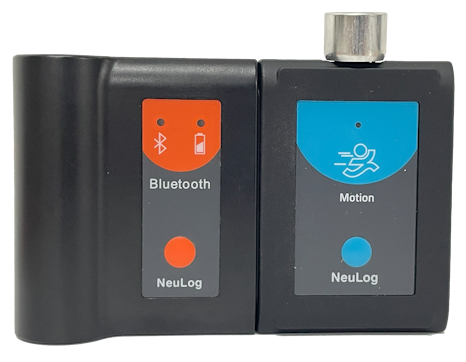Newton’s second law
|
Measure cart velocity and calculate gravity within few steps. Study the relationship between force, mass and acceleration. Using the NeuLog motion sensor NUL-213 and the connectivity module BLT-202 |
 |
|
Watch the video to see how NeuLog makes it simple |
|
|
| Newton’s second law of motion was the first to define accurately the relationship between force, mass and acceleration. The acceleration is linearly proportional to the net applied force in the same direction. The net force is equal to the mass of the object multiplied by its acceleration: |
| F = m • a |
| According to Newton’s second law, the cart’s acceleration is equal to the force that gravity exerts on the mass hanger minus the friction force, divided by the total weight of the cart and the mass hanger (with the 50 g mass): F = fgravity– ffriction
m = 0.05 Kg M = 0.4 Kg mT = 0.45 Kg g = 9.8 m/s2 ffriction = 0.21N aF calculated = ((0.05 Kg • 9.8 m/s2) – 0.21N) / 0.45 Kg = 0.28 N / 0.45 Kg = 0.62 m/s2
|